If you’ve ever had Tajima error codes pop up on your embroidery machine, you know how frustrating it can be. These codes are the machine’s way of telling you something needs attention, from small tweaks to more specific adjustments.
By learning what each error code means, you can save time and quickly resolve issues instead of relying on guesswork. In this article, we’ll walk through some of the most common Tajima codes, explain what might be causing them, and give you easy fixes to keep your embroidery running smoothly.
Let’s break down these codes so they’re easier to manage!
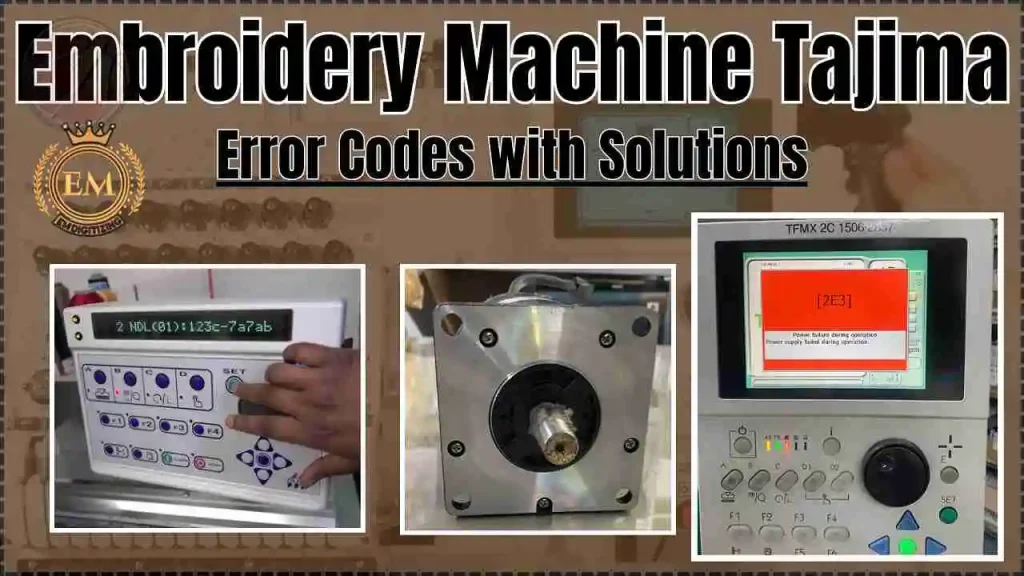
Embroidery Machine Tajima Error Codes with Solutions
15 Common Tajima Error Codes
Here are some typical errors you might see on Tajima embroidery machines. Each code points to a specific problem, helping you quickly identify and resolve issues.
- 2B1 Error Code
- 2B2 Error Code
- 2B3 Error Code
- 2B4 Error Code
- 2B5 Error Code
- 3D6 Error Code
- BC1 Error Code
- 211 Error Code
- 311 Error Code
- 312 Error Code
- 313 Error Code
- 314 Error Code
- 316 Error Code
- 321 Error Code
- 322 Error Code
For each error code, we look at why it happens and how to resolve it effectively. This approach helps in pinpointing the exact issue and applying the right fix quickly.
2B1 Error Code
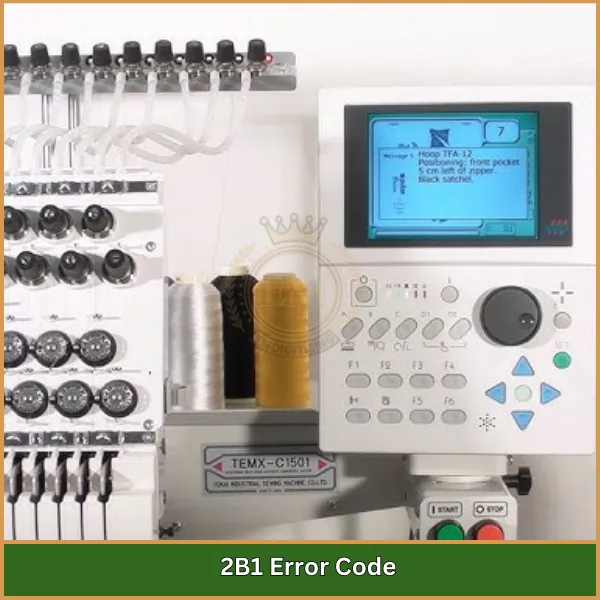
This error hints at a connection problem, specifically involving a serial device like a computer that the machine can’t detect or communicate with. This is classified under Tajima error codes related to connectivity.
Solutions
- Double-Check Serial Connections: Confirm that all serial devices are securely plugged in and turned on.
- Reboot Devices: Switch off the embroidery machine and any connected devices, then turn them back on to refresh the connection.
- Validate Design Data: Make sure the design data being sent over is correct; check for compatible file formats.
- Inspect Cables: Look for damaged cables that could be breaking the connection.
2B2 Error Code
This code shows up when there’s a problem with stitch data, usually due to mismatched or missing complementary Tajima error codes.
Solutions
- Fix Data Input: Go over your design data and correct any errors in the input.
- Re-enter Design: If needed, re-input your design data using your embroidery software to avoid issues.
- Use Updated Software: Ensure your software is compatible with Tajima machines to prevent compatibility issues.
2B3 Error Code
This error signals that some extra, unintended data has been left at the end of a code sequence, which can confuse the machine.
Solutions
- Review Formatting: Check your design data for any additional or misplaced data at the sequence end and remove it.
- Re-save Files: Save your design files again in a format that’s compatible with the machine.
- 1 DFA: Consider this identifier for further troubleshooting in complex issues.
2B4 Error Code
This code means the stitch codes being read by the machine don’t follow the required format, which leads to errors.
Solutions
- Verify Code Format: Ensure all stitch codes align with Tajima’s standard format.
- Use Proper Software: Only create designs using software designed for Tajima machines to avoid formatting errors.
2B5 Error Code
This error shows up when a stitch length in your design exceeds the machine’s 5.1 mm limit. 1 DFA may also apply here.
Solutions
- Reduce Stitch Lengths: Go into your design and adjust any stitches that exceed the limit.
- Simplify Complex Designs: For intricate designs, consider simplifying sections or dividing them into smaller parts to avoid overloading the machine.
3D6 Error Code
The Tajima 3D6 error code indicates a problem with the machine’s program or the CPU card, often due to software issues or incorrect installation.
Solutions
- Reinstall Software: Use the installation disk or download the latest software from the Tajima site to reinstall on the CPU card.
- Secure CPU Card: Ensure the CPU card is properly connected and seated in its slot.
- Contact Support: If the issue persists, reach out to Tajima support for guidance.
- System Reset: For some models, a system reset can help; check the user manual for reset instructions.
BC1 Error Code
The BC1 error code Tajima arises when the machine can’t locate a design on the floppy disk or finds no design registered there.
Solutions
- Verify Disk Content: Make sure the floppy disk has valid design files, and try another disk if needed.
- Check Compatibility: Confirm that the floppy disk is compatible with your specific machine model.
- Try Another Design: If one design isn’t found, attempt selecting a different one from the disk.
- Examine Disk Drive: Look into potential mechanical issues with the floppy disk drive.
BC1 Error Code
The BC1 error code Tajima arises when the machine can’t locate a design on the floppy disk or finds no design registered there.
Solutions
- Verify Disk Content: Make sure the floppy disk has valid design files, and try another disk if needed.
- Check Compatibility: Confirm that the floppy disk is compatible with your specific machine model.
- Try Another Design: If one design isn’t found, attempt selecting a different one from the disk.
Examine Disk Drive: Look into potential mechanical issues with the floppy disk drive.
211 Error Code
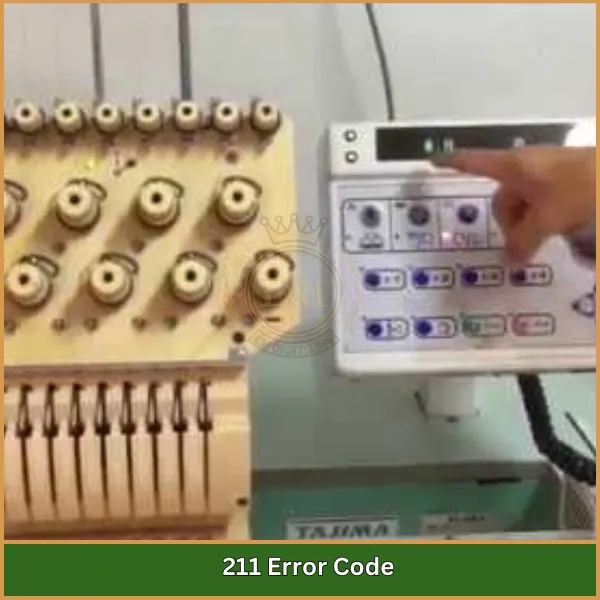
The Tajima 211 error code means the machine’s main shaft isn’t in the correct position, which is crucial for accurate operation.
Solutions
- Adjust Main Shaft: Manually position the main shaft to its proper location according to your manual.
- Check Encoder Signals: Clean and inspect the encoder to ensure it’s working as expected.
- Restart the Machine: Power cycle the machine to clear temporary issues.
- Inspect Mechanism: Look for any obstacles or damage that could be affecting the main shaft.
311 Error Code
The Tajima 311 error code suggests an issue with the motor or motor belt since the encoder signal isn’t changing as it should.
Solutions
- Examine Motor and Belt: Check for wear or damage on the motor and belt.
- Reconnect Encoder: Confirm that the encoder is firmly connected.
- Run Motor Test: Perform a motor test to detect any problems.
- Apply Lubricant: Regularly lubricate moving parts to keep them in good working order.
312 Error Code
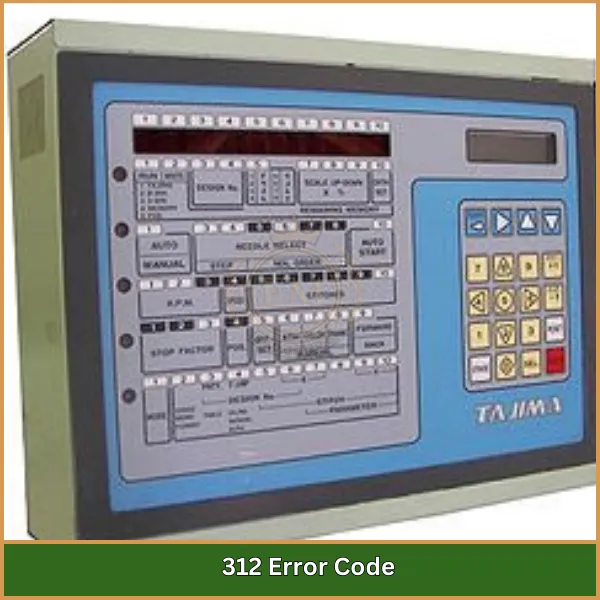
Similar to the 311 Tajima error codes, this code signals that Encoder Z is not registering movement, which can indicate a hardware problem. 1 DFA might help in troubleshooting here.
Solutions
- Reconnect Encoder Z: Ensure all connections to Encoder Z are secure.
- Test Encoder Function: Run diagnostics to ensure Encoder Z is responding correctly.
- Replace Parts if Needed: Consider replacing any faulty components.
313 Error Code
This code shows that the clutch stopper has unexpectedly disengaged, which interrupts normal stitching operations.
Solutions
- Re-engage Clutch: Manually re-engage the clutch stopper if possible.
- Remove Obstructions: Check for any obstacles that could have caused the disengagement.
- Consult Manual: Refer to the manual for detailed re-engagement instructions.
314 Error Code
This error occurs when the main shaft fails to rotate, often due to mechanical or motor-related issues.
Solutions
- Inspect Encoder Lines: Ensure that encoder signal lines are correctly connected and functioning.
- Check Belts for Wear: Examine belts for any signs of wear and replace them if needed.
- Lubricate Regularly: Keep all moving parts well-lubricated to support rotation.
316 Error Code
This code indicates a fault in the main shaft driver, which may stem from electrical or component issues.
Solutions
- Replace Driver Unit: If necessary, replace the driver unit.
- Verify Connections: Check wiring and connections linked to the driver.
- Conduct Electrical Tests: Run electrical diagnostics to locate the source of the issue.
- 1 DFA: This identifier may help in isolating certain problems.
321 Error Code
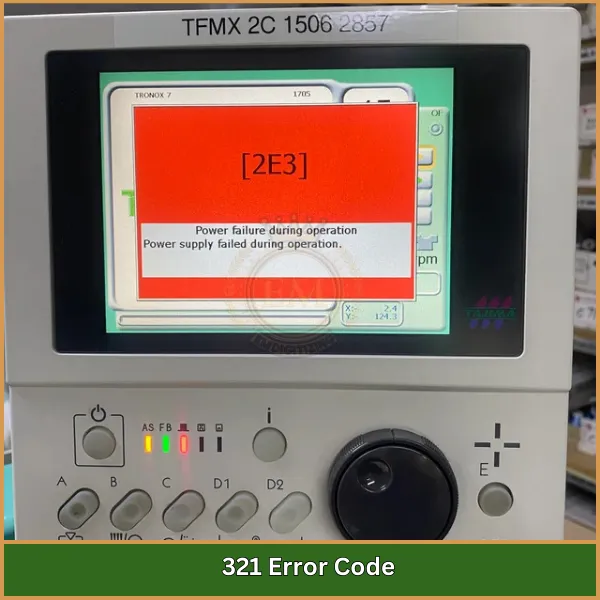
The 321 error code points to a Pulse Motor Driver (PMD) failure, which is essential for precise motor control.
Solutions
- Secure Connections: Make sure all motor and driver connections are firmly in place.
- Replace Faulty Components: Replace any defective parts within the PMD.
Routine Checks: Regularly inspect and maintain PMD units to prevent issues.
322 Error Code
This error relates to issues with X-axis control, specifically with the pulse motor driver responsible for X-axis movements.
Solutions
- Examine Thread Trimming Drive: Check the drive card and connections related to thread trimming.
- Replace Damaged Parts: Swap out any damaged components affecting X-axis movement.
- Test X-Axis Independently: Run a test for X-axis movement to ensure proper functioning.
Conclusion
Mastering Tajima error codes is a huge help for keeping your embroidery projects on track. When you know the reason behind each code, fixing issues becomes simpler and faster. For top-notch digitizing services, EMdigitizing is here to support you with unbeatable quality, fast turnaround, and budget-friendly rates.
We even offer a preview option, so you know exactly what your design will look like. Plus, as a first-time customer, you’ll get an amazing 50% discount! Let EMdigitizing make your embroidery experience smooth and successful.
